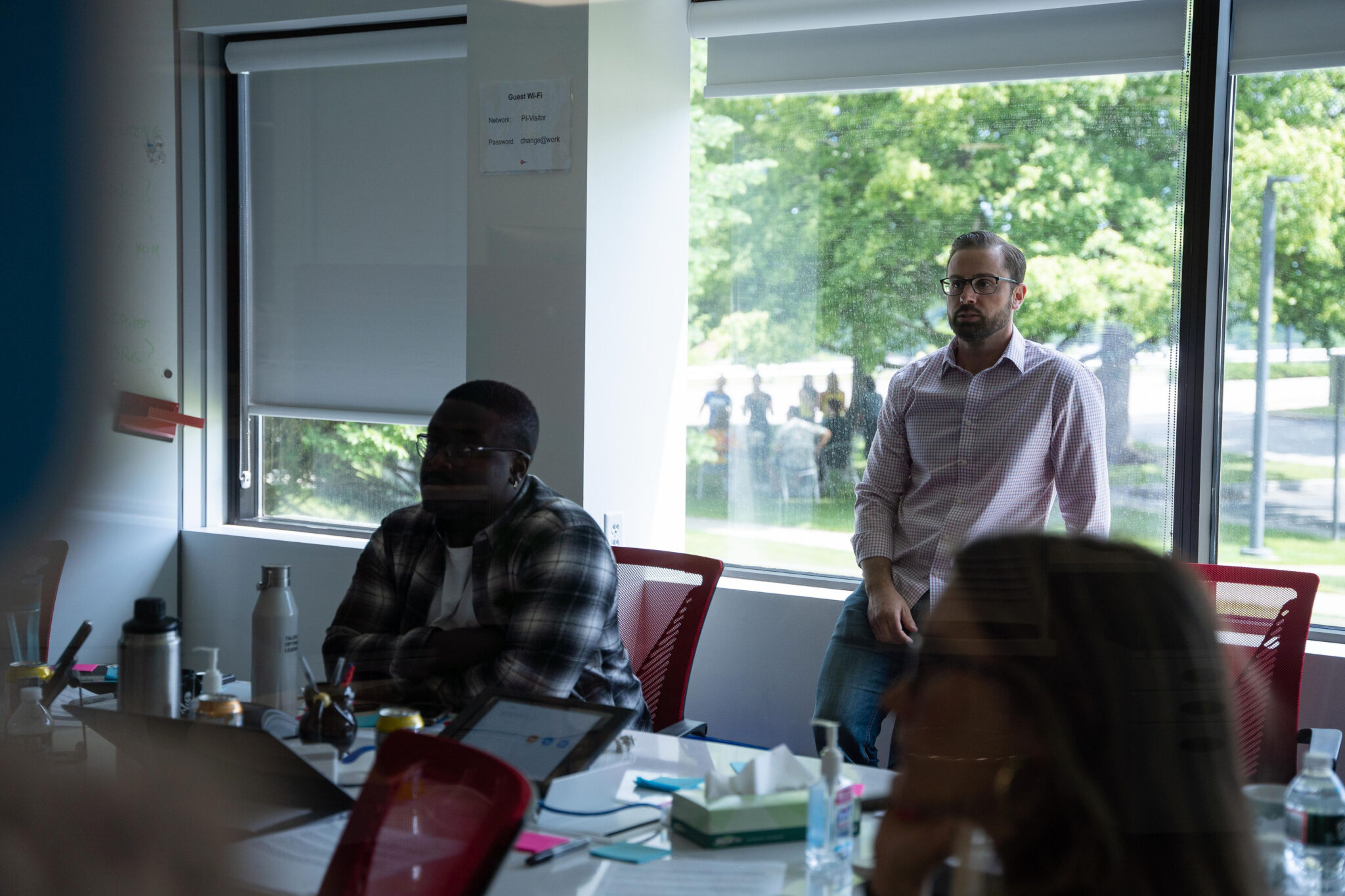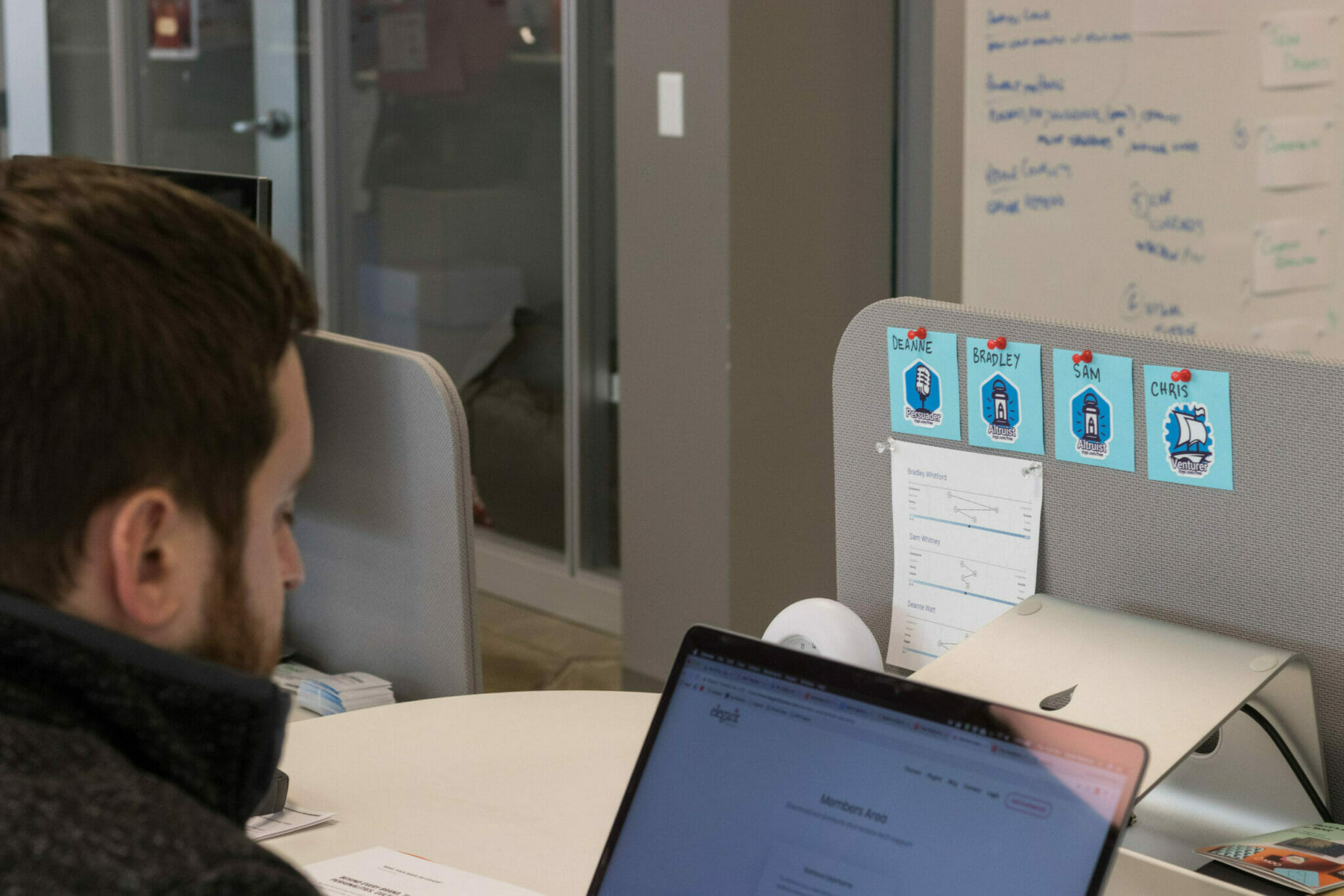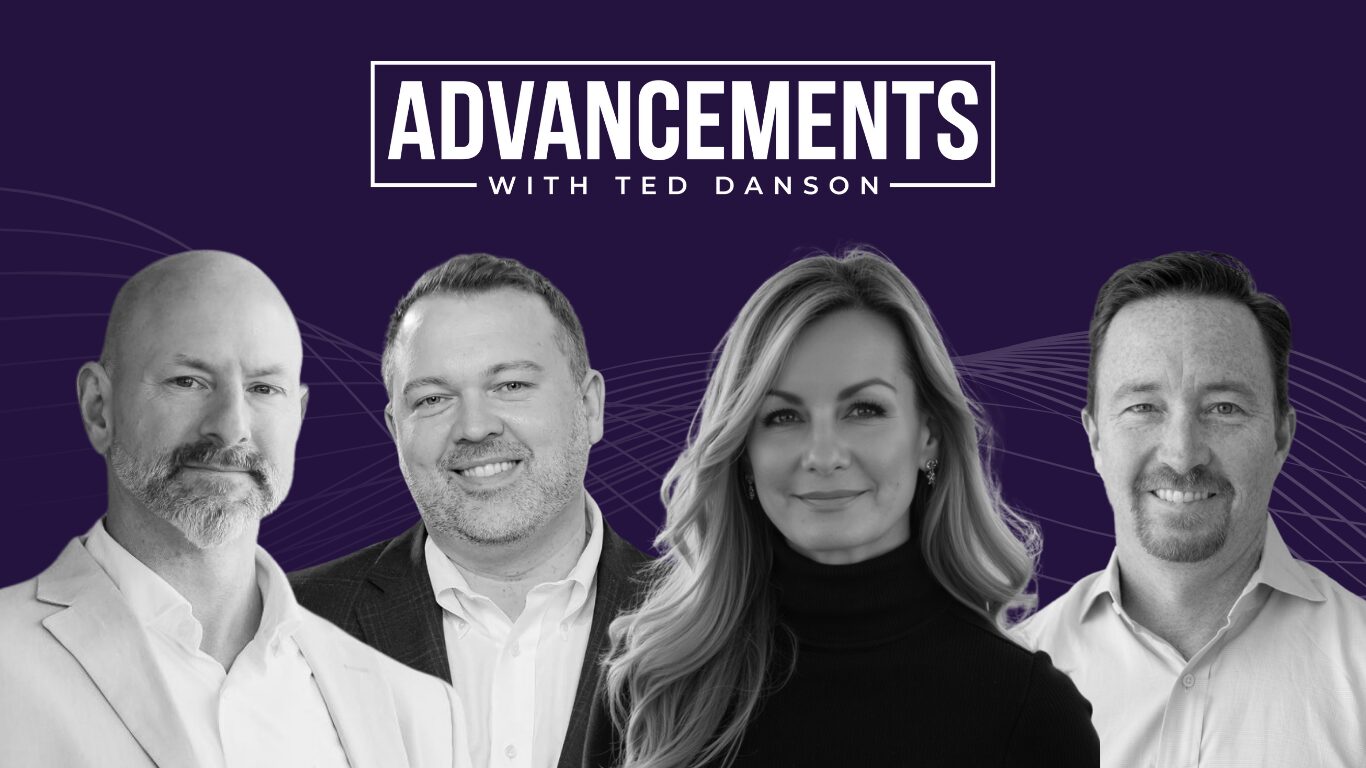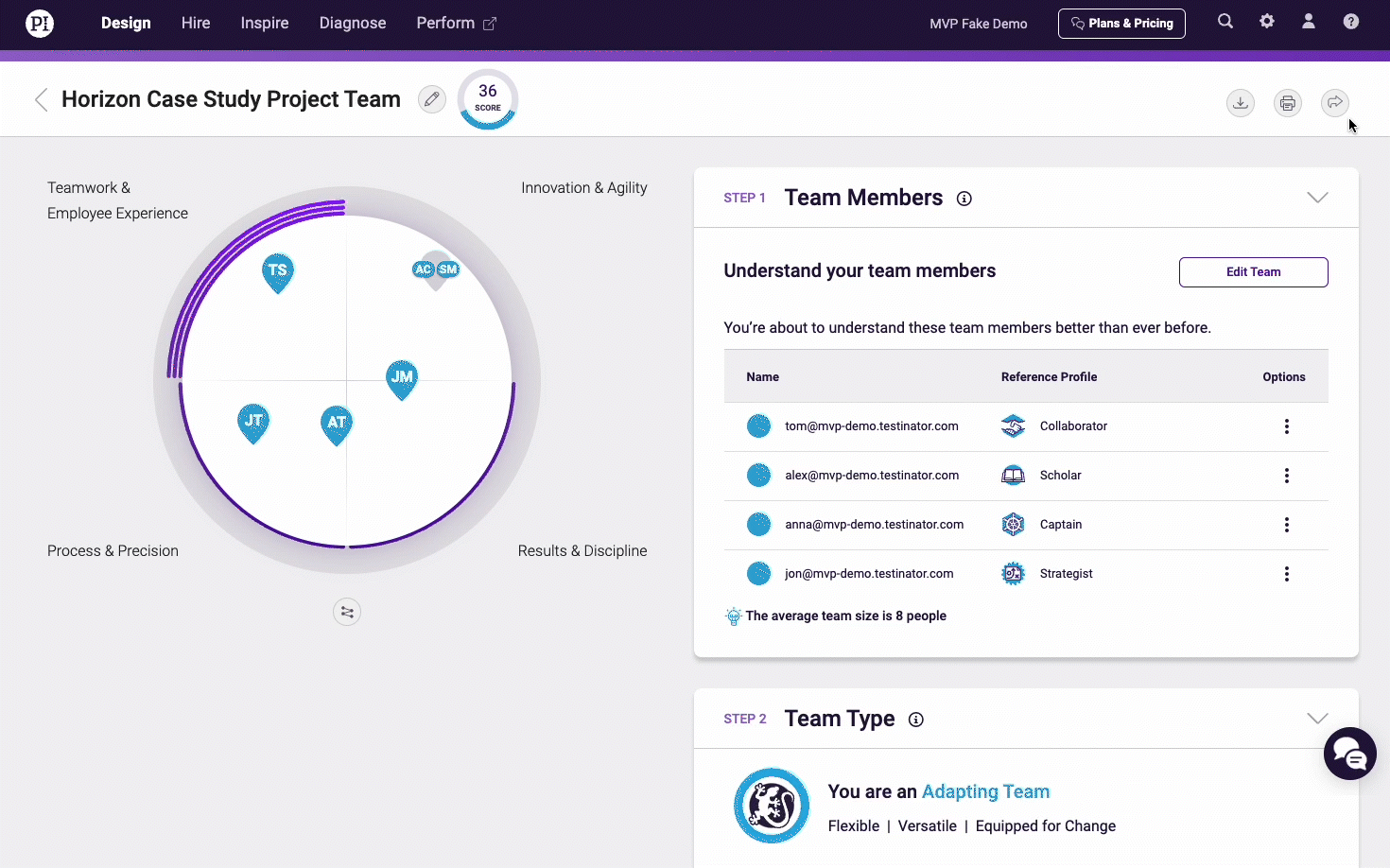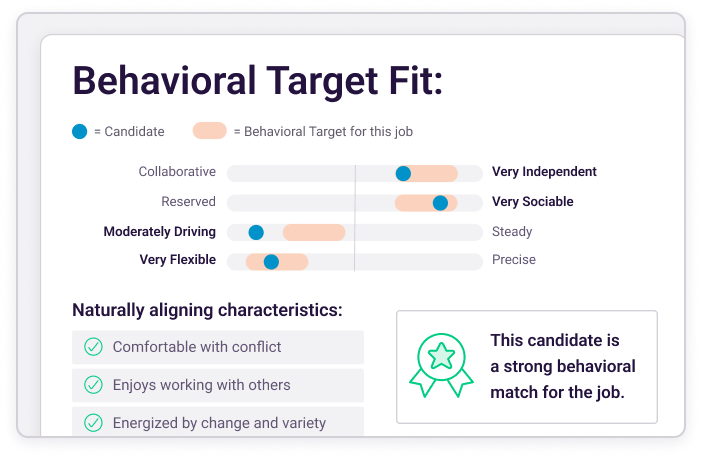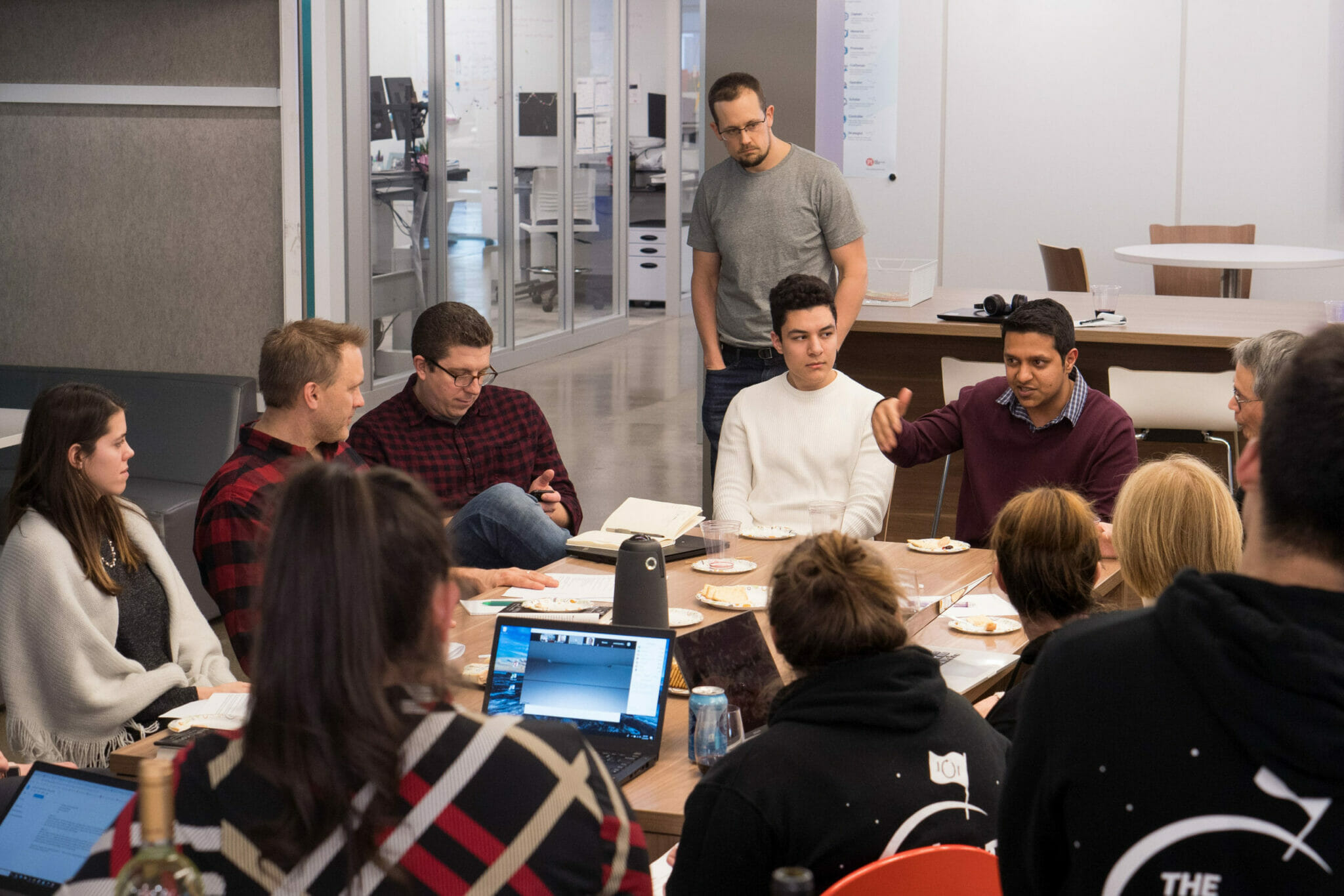We’re unpacking the forces driving HR and business action over the next half-decade. We’re putting these forces in historical context, while also providing HR leaders with actionable advice on how to assess their risk, prepare their teams, and better understand the ramifications of inaction.
How will humans integrate technology at work over the next five years?
It’s a simple yet essential question – one without simple or one-size-fits-all-industries answers.
We do know a few near-universal truths: Companies will significantly increase their adoption of AI and automation technologies in the coming decade, if not sooner. According to research from the World Economic Forum:
- 75% of organizations plan to introduce generative AI over the next five years.
- 86% of companies expect to incorporate AI and related technologies into their business operations.
Automation and AI will be applied to increasingly complex and higher-skill tasks, not just routine jobs. This will lead to changes in countless roles, with AI complementing human workers in increasingly evolved ways. For example, doctors may use AI to assist with diagnoses, while retail workers may shift to managing automated systems.
How workforces – and HR teams – prepare for these shifts
Workers must learn how to balance adoption with upskilling and development.
As these shifts unfold, the best thing HR practitioners can do is offer guidance and reassurance. Help people understand that generative AI tools work best when paired with people who possess strong social and emotional skills. You’ll need those skills to navigate a smooth integration – but there will still be adjustments and upskilling required to stay in lockstep with the anticipated shifts.
Consider your people’s behaviors, and how they might affect their response to certain changes. Be aware that certain personality traits (e.g., high extraversion and neuroticism) may be associated with higher risk of cyberslacking.
Tailor support based on individual employee needs and characteristics, and foster an inclusive culture that promotes open discussions about new technologies. That also means ensuring your people management practices account for behavioral data.
Let’s dive deeper into what people leaders can do to prepare for these shifts.
Redefining required skills
We know workers need to continue adapting their skillsets – that’s nothing new. Demand for advanced technological skills like programming will continue to grow. Basic digital literacy will be essential in nearly any role. There remains a disconnect between what’s viewed as essential enhancements by leadership, and what their people want. HR professionals can be the bridge between both parties.
We’re entering an era in which social, emotional, and cognitive skills – like creativity and critical thinking – will become even more important. When the human elements are more elusive through our work tools, we’ll place a premium on those who can provide them.
Companies will need to invest heavily in training and reskilling programs to help workers transition efficiently alongside new tech. But evolving work models can actually coincide and assist with these transitions, as the same technology enables more flexible arrangements.
Virtual collaboration tools are plenty prevalent already. That proliferation figures to continue, but it will go further, with jobs broken down into discrete tasks owned by remote workers – or outsourced entirely to freelance collaborators.
In fields like manufacturing, workflows might be redesigned for safe and productive human-machine interaction. And more workers may see their roles shift toward the oversight and troubleshooting of automated systems.
The key to harmony will hinge on workers – whether they’re on the shop floor or in the executive’s corner office – willingly aligning their work with the tools at their disposal. It’s an essential component of any machine-human collaboration or productive hybrid environment: In order to maximize any technology’s efficiency, you must first have buy-in. Everyone needs to adopt it.
HR prep step 👉 Define what constitutes required tech, and provide guidelines for adoption, integration, and collaboration, at your organization.
Balancing adoption and collaboration
If we accept that AI and machine-learning technologies can augment human capabilities in areas like data analysis, allowing workers to focus on higher-level tasks, we still need to set up guardrails and guidelines. Those include some ethical considerations, such as:
- Ensuring responsible and unbiased use of AI systems
- Protecting worker privacy as more data is collected and analyzed
- Balancing efficiency gains with job quality and worker wellbeing
This is where the role of the people professionals is so pivotal. Employees will look to HR for much more than guidance on their benefits. You’ll be seen as an integral part of their adoption and transitions, helping ensure new tech is not only integrated smoothly, but in a manner that doesn’t degrade people’s work or work-life balance.
Pace is also important. One way to put people at ease with technological transitions? Make sure they’re comfortable with the rate of change. HR can play an important role here in making work flexible and fulfilling, while still capitalizing on efficiency gains.
It’s also essential that people professionals know and acknowledge the downsides of adoption. Risks vary by industry and the sort of technological change you’re considering, but you ought to be read-up on and ready to address concerns from employees around:
- Deskilling of jobs
- Deteriorating working conditions
- Widening inequities in the workplace
- Increased stress from cognitive or information overload
Businesses that view these risks as opportunities to educate, rather than intimidate, will limit their vulnerability. But it’s also important to monitor your company’s dependency. Overreliance on certain tech for daily operations can leave you exposed to system failures, cybersecurity risks, and costly downtime if workers can’t access systems remotely.
HR prep step 👉 Mitigate these risks and soften any employee resistance by leaning into a complementary approach. Emphasize that any new rollout will be done thoughtfully and collaboratively, with an eye toward accentuating your people’s skills.
How employees can balance adoption with upskilling
The simplest way to start reassuring your employees that they can coexist with new tech is by crafting a comprehensive integration plan. It should account for different impacts in different departments or roles across the organization.
That plan can include (but is not limited to):
- Clear ethical guidelines and frameworks for responsible AI/technology implementation
- Investment in training and skills development to complement any transition
- A commitment to open communication
Supportive policies are key to protecting work-life balance. That might mean establishing clear expectations around technology use outside work hours. Or it might simply mean normalizing and encouraging time off from devices. Digital detox initiatives are increasingly complex, but they are designed to promote healthy tech habits.
By taking a thoughtful, worker-centric approach to technology adoption, employers can maximize benefits while minimizing negative impacts on their workforce. The key is to view technology as a tool to augment and support workers rather than replace them entirely.
But make no mistake: HR’s role here is complex. Smooth integration requires regular monitoring, taking the temperature of technostress at your company.
HR prep step 👉 Conduct regular assessments, implement surveys, and engage in regular conversations with employees to gauge how integration is going.
HR as the cultural tone-setter
Taking it a step further, you can find ways to analyze digital communication patterns, and identify specific digital stressors impacting individuals. Utilize tools to assess productivity trends and screen time, while respecting employee privacy. Managers should be attentive to early signs of burnout, even among high-performing employees.
Most of all, model healthy digital communication practices. Provide supportive resources and family-friendly arrangements to improve employee wellbeing where necessary, even before any signs of stress or burnout surface.
By implementing these strategies, employers can proactively identify and address technostress, creating a healthier and more productive work environment that still solidly relies on the skills of people as much as it does tech.
It’s important to remember that there’s no one-size-fits-all solution, and approaches should be tailored to the specific needs of the organization and its employees. But any proactive HR person – especially one that’s read this far – knows that already 😉.
